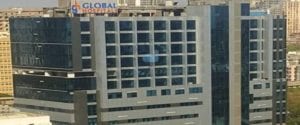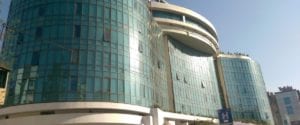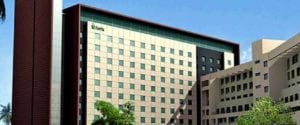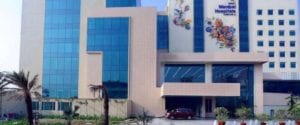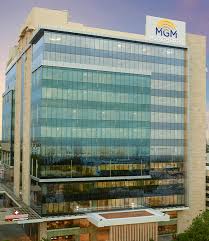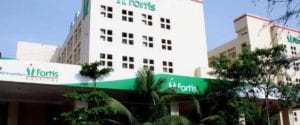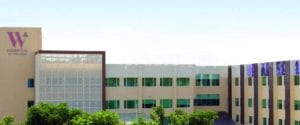Best Doctors in India for Bronchoscopy
Best Hospitals in India for Bronchoscopy
- City: Mumbai, India
Hospital Highlights:
- Gleneagles Global Hospital The 450-bed facility comprises of 17-stories, housing state-of-the-art infrastructure, and advanced medical care facilities.
- The hospital offers end-to-end clinical, surgical, and diagnostic services. It is equipped with a team of eminent medical professionals aided by qualified nurses and medical staff
- The Hospital offers advanced Endoscopic procedures, Hepatobiliary and Liver Surgeries, Surgical and Medical Gastroenterology, Bariatric Surgery, and Robotic surgery.
- The hospital is a center of excellence for Orthopedics, Joint Replacement, Knee Replacement, and Hip Replacement surgery.
- City: Hyderabad, India
Hospital Highlights:
- CARE Hospitals were established in the year 2000, by CARE Group.
- The multispecialty hospital has 435 beds, including 120 critical care beds, with an annual inflow of 180000 outpatients and 16,000 in-patients.
- The hospital provides specialty medical services in Cardiology, Cardiothoracic Surgery, Pediatric Cardiology, Pediatric Cardiothoracic Surgery, Neurology, Neurosurgery, Nephrology, and Urology.
- The hospital has the first dual source, 128 slice CT scanner (for high precision cardiac imaging) – the first of its kind in south India.
- The hospital offers a wide range of accommodation facilities for the convenience of its varied patient base, ranging from general wards to super deluxe rooms.
- City: Mumbai, India
Hospital Highlights:
- Fortis Hospital in Mulund is a 315-bed multi-speciality tertiary care hospital with five JCI accreditations that offers a wide variety of diagnostic and treatment services. The Fortis Hospital in Mulund delivers patient-centred treatment with cutting-edge technology, highly skilled and experienced surgeons, and paramedical staff.
- This institution houses Maharashtra’s largest multi-organ transplant centre. It is also the first heart transplant centre in western India to conduct 100 or more consecutive heart transplants in under four years. It is the only hospital in the city to have multi-organ transplants and has handled the youngest patient for angioplasty. Fortis Hospital Mulund now boasts the first advanced surgical robot in central Mumbai.
- Cardiology and heart surgery, urology, nephrology, neurosciences, orthopaedics, digestive care, emergency and critical care, and maternity care are among the services provided by the hospital.
- City: New Delhi, India
Hospital Highlights:
- Manipal Hospitals, Dwarka, is a super-specialty hospital in Dwarka, New Delhi, which is a part of Manipal Hospitals Group.
- The hospital aims to provide the best treatment on par with international standards at a fraction of the cost.
- Equipped with 380 beds, the hospital is also one of the new age hospitals which are equipped fully with state-of-the-art infrastructure, cutting-edge technology as well as the latest and advanced clinical practices. The hospital also has 13 modular Operation theatres with 118 beds which are solely meant for critical care.
- The hospital comprises internationally acclaimed doctors and highly professional and experienced hospital and medical staff who are able to provide preventive, therapeutic, and diagnostic services all under one roof.
- City: Chennai, India
Hospital Highlights:
- Located in Chennai, India, MGM Healthcare is a top multispecialty hospital that provides all medical services under one roof.
- Since its founding in 2019, MGM Healthcare has quickly become a leading national referral centre, creating several innovative flagship initiatives.
- MGM Healthcare combines next-generation medical and digital technologies to provide better patient results.
- With 12 centres of excellence, more than 400 inpatient beds, 100 intensive care unit beds, and 24/7 emergency care, MGM Healthcare leaves no chance in redefining the patient experience in Chennai.
- MGM Healthcare boasts 250+ expert doctors across 30+ departments, including Cardiology, Pulmonology, Neurology, Obstetrics & Gynaecology, and more.
- They house 12 specialized Centres of Excellence, including Neurosciences, Orthopaedics, and Multi-Organ Transplantation.
- Their team of doctors, nurses, and paramedics works together to give every patient individualized treatment.
Hospital Highlights:
- Lilavati Hospital & Research Centre is India’s premier multi-speciality tertiary care hospital and has been recognised as a global medical excellence centre.
- Lilavati Hospital & Research Centre has built an unrivalled level of trust with its patients over the years, thanks to a solid foundation that comprises cutting-edge facilities, the best medical competence, research, education, and charity endeavours.
- The hospital is quite proud of the fact that it now serves patients from all kinds of backgrounds, not just from the United States but from all around the world.
- The hospital has a total of 323 beds, one of the largest Intensive Care Units (ICUs), 12 Operation Theatres with modern amenities, over 300 consultants, and almost 1,800 personnel.
- City: Mumbai, India
Hospital Highlights:
- Fortis Hiranandani hospital was established in 2007.
- The hospital is an advanced tertiary care, multi-specialty hospital equipped with 149 beds.
- The hospital is equipped with a super ICU to provide emergency medical care to critically ill patients.
- The hospital is NABH accredited.
- The critical care facility in the hospital is augmented with the state-of-the-art facilities that facilitate speedier diagnosis and efficient monitoring.
- The hospital provides specialty medical services in cardiology, orthopedic science, pediatric science, neurology, diabetic care, urology, nephrology, ENT, obstetrics, gynecology, cosmetic surgery, bariatric surgery, neuro and spine care.
- City: Gurugram, India
Hospital Highlights:
- W Pratiksha Hospital, Gurugram, is one of the best hospitals in the NCR region. It is also a top hospital in India for IVF. Since its inception, the hospital has performed over 5500 successful IVFs. The hospital also specializes in gynecology.
- With over 20 years of experience in providing quality healthcare, the hospital is known as one of the most trusted and valued health providers in India.
- Equipped with world-class medical facilities and advanced technology, the hospital’s doctors and clinicians also have a track record of delivering excellent results. The hospital is also known for focusing on preventive well-being as much as on curative treatment.
- The hospital has earned the trust of its patients, by providing the best available treatments at affordable costs.
- City: Gurugram, India
Hospital Highlights:
- Paras hospital was established in 2006 and is the 250 bedded flagship hospital of Paras Healthcare.
- The is supported by a team of doctors of international and national repute.
- The hospital is NABH accredited and also the first hospital in the region to have a NABL accredited laboratory.
- The hospital provides specialty medical services in around 55 departments including Neurosciences, Joint Replacement, Mother & Child Care, Minimal Invasive Surgery, Gynecology and Obstetrics, Ophthalmology, Dermatology, Endocrinology, Rheumatology, Cosmetic and Plastic surgery.
- The hospital is equipped with state-of-the-art technologies.
- City: Kolkata, India
Hospital Highlights:
- Fortis Hospital, Anandapur, Kolkata is a world-class super-speciality equipped with the latest technologies in the medical world.
- The hospital is NABH accredited.
- This state-of-the-art facility specializes in cardiology and cardiac surgery, urology, nephrology, neurosciences, orthopaedics, digestive care, emergency care and critical care.
- The hospital, governed by integrated Building Management System (IBMS), has a pneumatic chute system, for quick vertical and horizontal transportation between floors, facilitating speedy transfer of patient specimens, documents, reports, and medicines to the concerned departments.
- The hospital also has a nephrology department with over 28 advanced dialysis units.
Bronchoscopy
Bronchoscopy is a test which can help your doctor to examine your airways. The procedure involves your doctor threading an instrument known as a bronchoscope, through your nose or your mouth, in order to reach your lungs.
This bronchoscope is made of a flexible fiber-optic material and is equipped with a light source as well as a camera. Generally, bronchoscopes are also mostly compatible with color video, which can help your doctor to document his/her findings.
Purpose
Bronchoscopy is generally performed to find the cause of a lung condition. For example, if you have a persistent cough or an abnormal chest X-ray, then this test might be recommended by your doctor.
Some of the reasons this procedure might be performed include:
- Diagnosis of a lung problem
- Biopsy of tissue from the lung
- Removal of mucus, a foreign body, or any other obstruction in the airways or lungs, like a tumor
- To place a small tube to hold open an airway
- Treatment of a lung problem, i.e. interventional bronchoscopy.
During certain procedures, special devices might be passed through the bronchoscope, such as a tool in order to obtain a biopsy, an electrocautery probe in order to control bleeding.
Preparation

As you prepare for a bronchoscopy, it might involve restrictions on food and medications. Your doctor is going to most likely ask you to stop taking blood-thinning medications. You will also be most likely asked not to eat or drink around eight hours before your procedure.
If you will be going home right after the procedure, it is important to arrange for a friend or family member to take you home. Because of the side effects of the medications, you will not be able to drive. You might also want to have someone stay with you for the night.
The procedure might be done in a clinic or an operating room in a hospital. The entire procedure, as well as recovery time, should take around four hours.
Before the procedure, you are going to be asked to sit back or lie on a table or a bed, at your sides. You are going to be connected to monitors as well so that the healthcare team is able to track your heart rate, blood pressure as well as your oxygen level during your procedure.
Next, you are going to receive sedatives, so that you don’t feel any pain during the procedure.
Procedure
Once you are relaxed, your doctor is going to insert the bronchoscope into your nose. It passes from your nose down to your throat until it reaches the bronchi. The bronchi are the airways in the lungs.
Brushes or needles might be attached to the bronchoscope to collect any tissue samples from the lungs. These samples can help your doctor diagnose any lung condition that you might be having.
Your doctor might also use a process called bronchial washing to collect cells. This involves the spraying of a saline solution on the surface of the airways. Next, the cells are going to be washed off of the surface and then collected as well as looked at under a microscope.
Depending on your condition, your doctor might find one or more of the following:
- Blood
- Mucus
- Swelling
- Infection
- Blockage
- Tumor
If your airways are blocked, a stent might be required to keep them open. This device is a small tube which can be placed into your bronchi with the help of a bronchoscope.
After your doctor is done examining the lungs, the bronchoscope is going to be removed.
After the procedure
After the procedure, you are going to be monitored for several hours. Your mouth and throat might also feel numb for a couple of hours. Unless your numbness wears off, you are not going to be allowed to eat or drink. This generally helps food and liquid, from entering your airways and lungs.
Generally, you should be able to cough and swallow again, when your mouth and throat is no longer numb. You can start with sips of water, and then move on to soft foods, such as soup or applesauce.
Note that you might also experience a mild sore throat, hoarseness, cough, or muscle aches. Gargling with warm water should help you lessen the discomfort.
If you experience any of the following, call your doctor right away.
- Have a fever that lasts over 24 hours
- Have increasing chest pain
- Cough more blood than normal
- Have difficulty breathing
Generally, your doctor is going to discuss the results with you one to three days after your procedure. He/she will most probably talk about how to treat any lung problems if any were discovered. You might need more tests and procedures as well.
If a biopsy was taken during the test, then it is going to need reviewing by a pathologist. Since the tissue samples require special preparation, sometimes test results can take longer than others to return. Some biopsy specimens are going to be sent for genetic testing, which can take over two weeks.
Risks & complications
Complications from a bronchoscopy are not only rare but also mostly minor. They can be related to the procedure itself, or from the sedative or topical numbing medicine.
If a biopsy was taken, you may experience bleeding. Fever is common after a bronchoscopy but it is not always a sign of an infection.
In rare cases, an airway can get injured during the test, and if the lung is punctured, air might collect in the space around the lung, which can cause the collapse of the lungs. This condition is treatable but might require a hospital stay.

